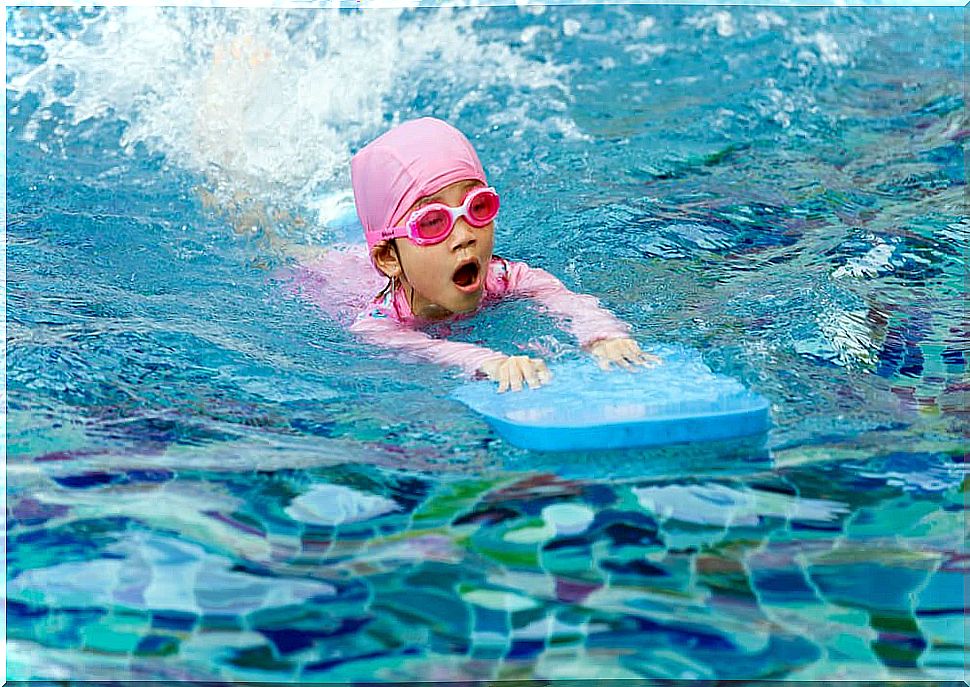Helping Children Learn To Swim: Tips And Advice
If you want to help your children learn to swim, it is important that they understand swimming as fun, not a duty. Then they are happier with the matter.

Our post today is about helping children learn to swim.
Swimming is one of the best sports ever for health and wellbeing. Almost all of the muscles are trained and at the same time the activity is a lot of fun.
Shared moments with the whole family in the swimming pool become the best memories. So in this article we want to give you advice on how to help children learn to swim .
Discover the simplest, safest tricks to help your kids learn to swim. Your child will learn this enriching activity through games, discipline and plenty of information about the safety measures that should be taken
Helping children learn to swim: don’t worry!
The first obstacle we encounter when trying to help children learn to swim is usually fear. It is therefore recommended that the child get used to water first.
It is best to normalize the situation first and have the parents present. The child feels trust, relaxes and begins to enjoy the experience.

One way to instill confidence in the child is to practice in a very shallow pool first . The child can stand there and does not feel the fear of going under.
It is also important that the water temperature is lukewarm. The child’s skin is more sensitive than ours and we don’t want them to turn down the water because of the cold. Under these circumstances, and with the guidance of their parents, children can be helped to learn to swim.
Breathing exercises in the bathroom
In the bathtub at home we can teach the little ones their first breathing exercises. Make a game of breathing through your nose and letting go of bubbles underwater.
In addition, the child can put their head under water in the bathtub and feel how it feels. It can be a great game to sink a toy on the bottom of the tub and let the child look for it.
Whenever you teach children something new, it is always best to make a game out of it.
Under no circumstances should we force or compel the child to dive. His learning is a natural, gradual process and the child sets the pace for it.
There are braver or more courageous children and others who are a little more timid and shy. In both cases they can become excellent swimmers if only we respect their learning process and know how to motivate it.
Go slowly to the swimming pool

The first time in the pool, the child can sit on the edge of the pool and let their legs dangle in the water.
In this way, the child gets used to the temperature and begins to splash around with their legs. After a while, you can encourage them to get into the water with you.
You always hold it tight and you go into a pool where the child can stand and also walk in the water.
One tendency that has been found to be effective is to minimize the use of armbands as much as possible .
These create a dependency that it is difficult to get rid of the children later on. They also convey a false sense of swimming ability and interfere with the actual activity.
The first swimming exercises
The child must see the activity as fun, so we must never go overboard or get annoyed if a task fails.
We teach the child the first swimming exercises as a game, age-appropriate and adapted to the ability of the individual child.
- Swim back and forth between parents : we stand at a short distance (which will later increase). We gently push the child towards our partner. So the little one instinctively begins to take their first swimming strokes.
- Swimming behind the prize : With the help of a swimming aid in the form of a stick, the child lies down in the horizontal position. We put a toy nearby for the child to paddle after. We slowly remove the toy further and further.
- The plane : the child hangs on our back and holds onto our neck. We spread our arms and play airplane. We pull the child behind us.
With these tips and advice you can help children learn to swim so that they can always have fun and enjoy this healthy activity.









